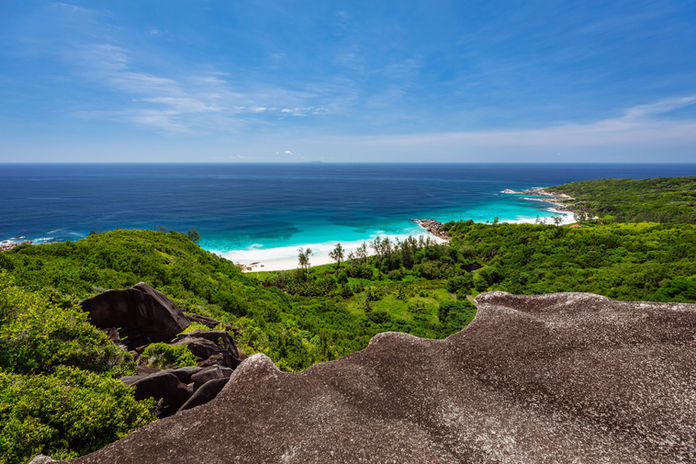les seychelles
« […] On an old Arabic map that I once consulted, there are certain islands in the Indian Ocean that are referred to as the "Rukh" islands, which are inhabited by a fabulous eagle with a wingspan of 150 feet capable of carrying an elephant. Some people like Battuta claim to have seen it, but the bird is probably a myth... Nevertheless, just because it is a chimera does not mean that the islands with which it is associated are also imaginary. […] »
Mc Ewen
North of Madagascar, in a remote part of the western Indian Ocean, lie remote islands reminiscent of the origins of the world to the Garden of Eden: the Seychelles.
Baptized Amirantes by Vasco de Gama in the 16th century, Mahé de La Bourdonnais found them in 1742. Abandoned for a decade to passing pirates, France made it one of its trading posts on the route to India by introducing spice plants, a founding botanical act. After the Napoleonic wars, the Seychelles came under British occupation, became a colony in 1903 and was attached to the African continent.
Of granite or coral origin, the hundred or so islands that make up the archipelago sing in unison a powerful hymn to nature, conducive to rest and meditation.
With a maritime surface area of more than one million square kilometres, these islands with their enchanting beaches, immaculate reefs and evocative names, all cultivate their singularity.
Lush and Creole Mahé, Praslin whose famous coco-fesse are jealously preserved, La Digue and its mythical Anse d'Argent are only the forefront of this extraordinary paradise...
Escape to Silhouette, Frégate, North, Denis, Cosmoledo, or to Aldabra Atoll, a UNESCO World Heritage Site, and you will be in contact with authentic wilderness, legendary and mysterious, idylls and sources of inspiration for literature, song and film.































